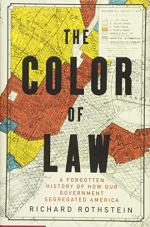
|
| Name: _________________________ | Period: ___________________ |
This test consists of 5 multiple choice questions, 5 short answer questions, and 10 short essay questions.
Multiple Choice Questions
1. How recently has the U.S. Supreme Court said that de facto segregation is beyond its jurisdiction?
(a) 1986.
(b) 1992.
(c) 1968.
(d) 2007.
2. What kind of language did federal documents use to disguise their racial intent?
(a) Lies.
(b) Euphemisms.
(c) Similes.
(d) Malapropisms.
3. When did the Tennessee Valley Authority create jobs and housing for whites only?
(a) 1921.
(b) 1944.
(c) 1917.
(d) 1933.
4. What does Beryl Satter say was one of the consequences of buying from blockbusters?
(a) Crime.
(b) Drugs.
(c) Crowded homes.
(d) Poor educational opportunities.
5. What is de jure segregation?
(a) White supremacist threats keeping races apart.
(b) Government policies keeping races apart.
(c) Geographical features keeping races apart.
(d) Private decisions keeping races apart.
Short Answer Questions
1. What position did Frederick Law Olmsted Jr., America’s pre-eminent landscape architect, take on integration in housing?
2. What else was covered beside who could buy a house in a racially restrictive covenant?
3. What does Rothstein say was the evidence the FHA used to back up the claim that African Americans in a white neighborhood would decrease property value and therefore increase losses?
4. What were the laws that limited blacks’ freedoms called in the South?
5. What did the city of Atlanta do when the Supreme Court found its housing plans unconstitutional?
Short Essay Questions
1. What backing does Rothstein say the FHA presented to support its claim that African Americans lowered property values?
2. Why does Rothstein say that he started his book in San Francisco Bay?
3. What was the Supreme Court’s logic when it upheld an exclusionary zoning ordinance in Arlington Heights, Chicago in 1977?
4. When black families could end up getting mortgages, how does Rothstein say those mortgages affected them?
5. Why does Rothstein say that Robert Mereday did not even bother filing an application for a mortgage?
6. How does Rothstein circumvent the argument that racially restrictive covenants and exclusionary zoning ordinances were private agreements?
7. How did the courts end the use of racially restrictive covenant?
8. What does Rothstein identify as the force that made blockbusting possible?
9. What does Rothstein say public housing means now, and what did it originally meant?
10. How did the New Deal affect segregation of housing in the U.S.?
|
This section contains 1,053 words (approx. 4 pages at 300 words per page) |

|




